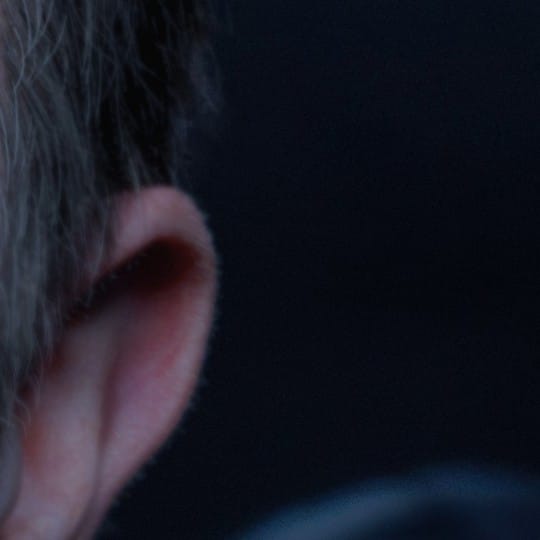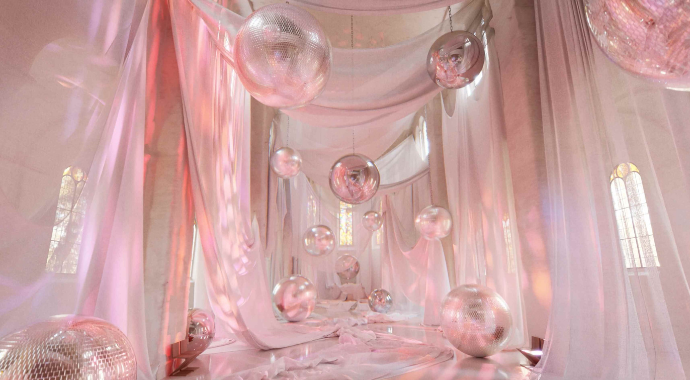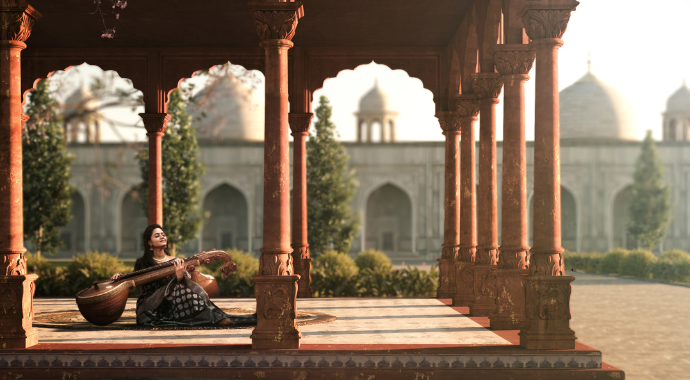Masterly CG artist Ian Spriggs is reinventing himself in more ways than one: Experimenting with a new self-portrait and switching to V-Ray GPU rendering in Maya.
It’s been six years since Ian Spriggs first caught the world’s attention with his CG self-portrait. Since then, he’s created a further 22 portraits (including one of our own Chris Nichols), given talks around the world about his blending of old and new techniques, and his work has graced several magazine covers.
Now, this talented and meticulous artist is going back to where it started with a new self-portrait. This time he’s approaching it in a new light (literally), jumping from CPU to GPU rendering in V-Ray Next for Maya. He’s also venturing into new, experimental territory with this one: Instead of referencing a single source, he’s trusting the instincts he’s built up through his portraits to create an image that looks very different to what he’s done before.
We caught up with Ian to talk about how he’s experimenting with self-portraiture, switching to V-Ray GPU rendering and taking his in-depth knowledge of the past into the future.
Tell us about the inspiration behind your new self-portrait.
Ian Spriggs: A lot of my previous work was inspired by the masters. So everything is inspired by Rembrandt or Caravaggio and I've focused very heavily on that stuff with my previous portraits. But I feel like, if you’ve got to be constantly inspired by something which has already been done, you'll never create something new. So I'm going to consider all my previous portraits as my “series one” portraits.
With my new self-portrait, I'm trying to discover new ideas. We have new technologies, new ways of using tools, and I don't want to be using that to reflect what we did yesterday; I want to reflect what we're doing today. I need to push my arts forward just like technology is being pushed forward. I want to build on top of what has been done, rather than mimic what's been done.
It has a very cinematic look. Talk to us about that?
IS: I’ve definitely started getting more into a cinematography and photography type of lighting and I've tried to discover my own style through it. But I'm trying not to reference like I used to. For example, the inspiration for “Portrait of Erica” was a Hans Holbein painting. I would always have at least one image that I'd reference to create my portrait.
Now, I'm trying to have no references, because if I'm going to have references to copy, it won't be something new. I just think “I don't know how I'm going to get there, but I'm going to figure it out.” I don't think having a reference is going to help me create something original.
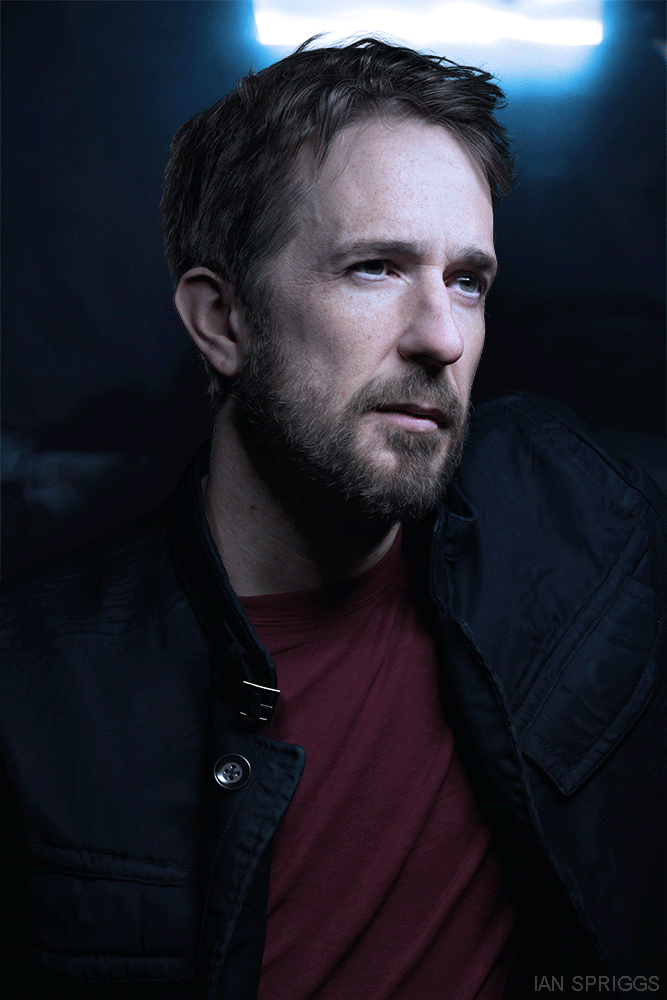
So how did you get to the final image without reference?
IS: I found the look through making it. I used to find the reference painting and I’d pose my subject similar to the painting. But on this one, my brother and I got together earlier this year, and for an entire evening we took a thousand photographs and tried different lighting, different things, like everything we could think of, we just tried it to see what would happen.
If you look at the self-portrait, the lighting on the back wall is almost like a mirror. Actually, I just stood in front of a mirror and the light is actually a reflection of the light that I'm holding. It's funny because not many people know that. And the light is being deformed a little bit because the mirror isn't perfectly mirror-like; it's a metal sheet.
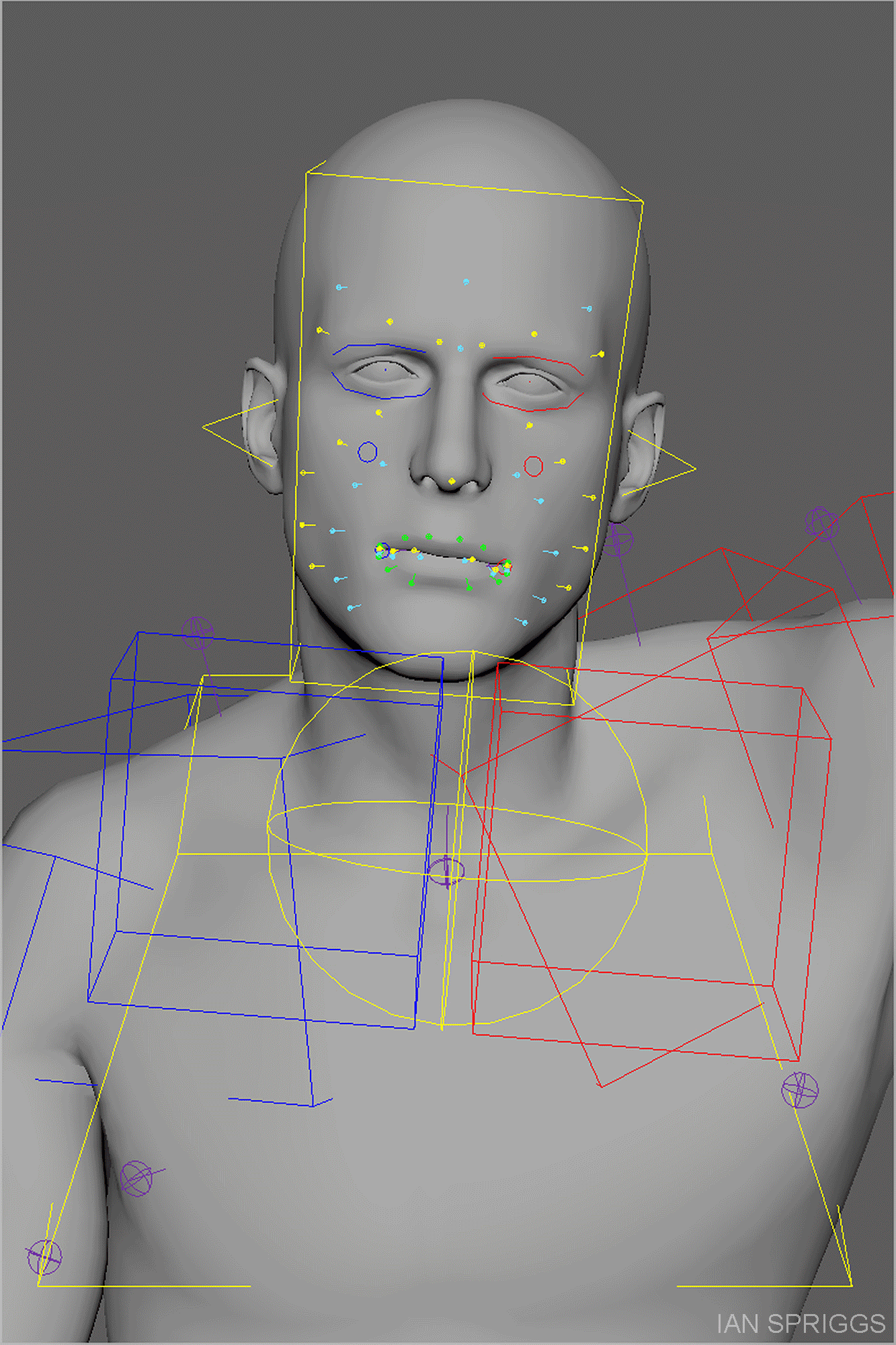
So how did you get to the final image without reference?
IS: I found the look through making it. I used to find the reference painting and I’d pose my subject similar to the painting. But on this one, my brother and I got together earlier this year, and for an entire evening we took a thousand photographs and tried different lighting, different things, like everything we could think of, we just tried it to see what would happen.
If you look at the self-portrait, the lighting on the back wall is almost like a mirror. Actually, I just stood in front of a mirror and the light is actually a reflection of the light that I'm holding. It's funny because not many people know that. And the light is being deformed a little bit because the mirror isn't perfectly mirror-like; it's a metal sheet.
So you're holding the light that's lighting your face as well, is that right?
IS: Yeah. So I'm holding a light in front of my face and when you see the light behind my head, it's actually a reflection of the lighting. Nobody really questions that. But without trying new and different things — like having mirrors and different lighting — I would never have discovered the composition.
I didn’t copy the photo one-to-one, though; the pose is a little bit different and the expression is a bit different as well. I collaged a couple of photos together to get the final image.
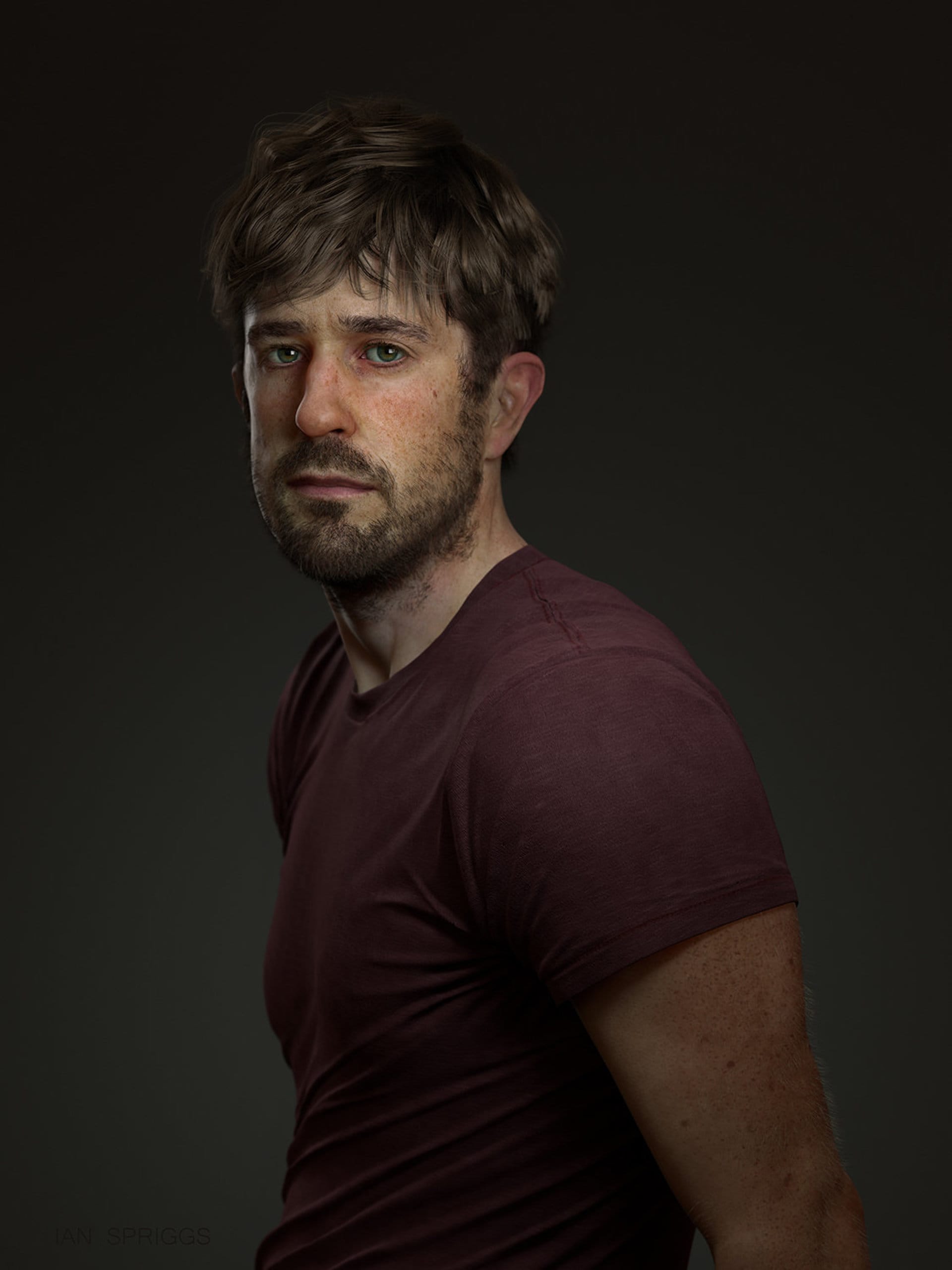
What do you feel you’ve learned since your first self-portrait?
IS: I find that kind of hard to answer because it's like my progression as an artist. It's been very slow. It's hard to see exactly how I have improved. But it's good to compare the two.
One thing I have noticed is that there's a lot more confidence in my newer one when I compare them side-by-side. My previous one was my first self-portrait and, even though I still like it, I feel like I'm not as comfortable in it. In this one, I'm facing the camera more; there’s more light on my face; I'm not shying away as much.
Did you pick up anything from meeting Paul Debevec and Scott Eaton at Total Chaos last year?
IS: They're paving the way for future artists and opening doors for a lot of people. Seeing that from both of them is really inspiring and — all of a sudden — it's what I’d love to be able to do as well. They're radically different, but they’re basically on the same page. I'd love to be on that page with them. I'm trying to figure out my own path of how to get there.
Podcast #233 | Ian Spriggs, Paul Debevec and Scott Eaton
Ian, Paul and Scott got together with podcast host Chris Nichols at last year's Total Chaos to talk about how GPUs, light fields and AI are changing CG art and digital humans. Listen to this engrossing discussion right here.
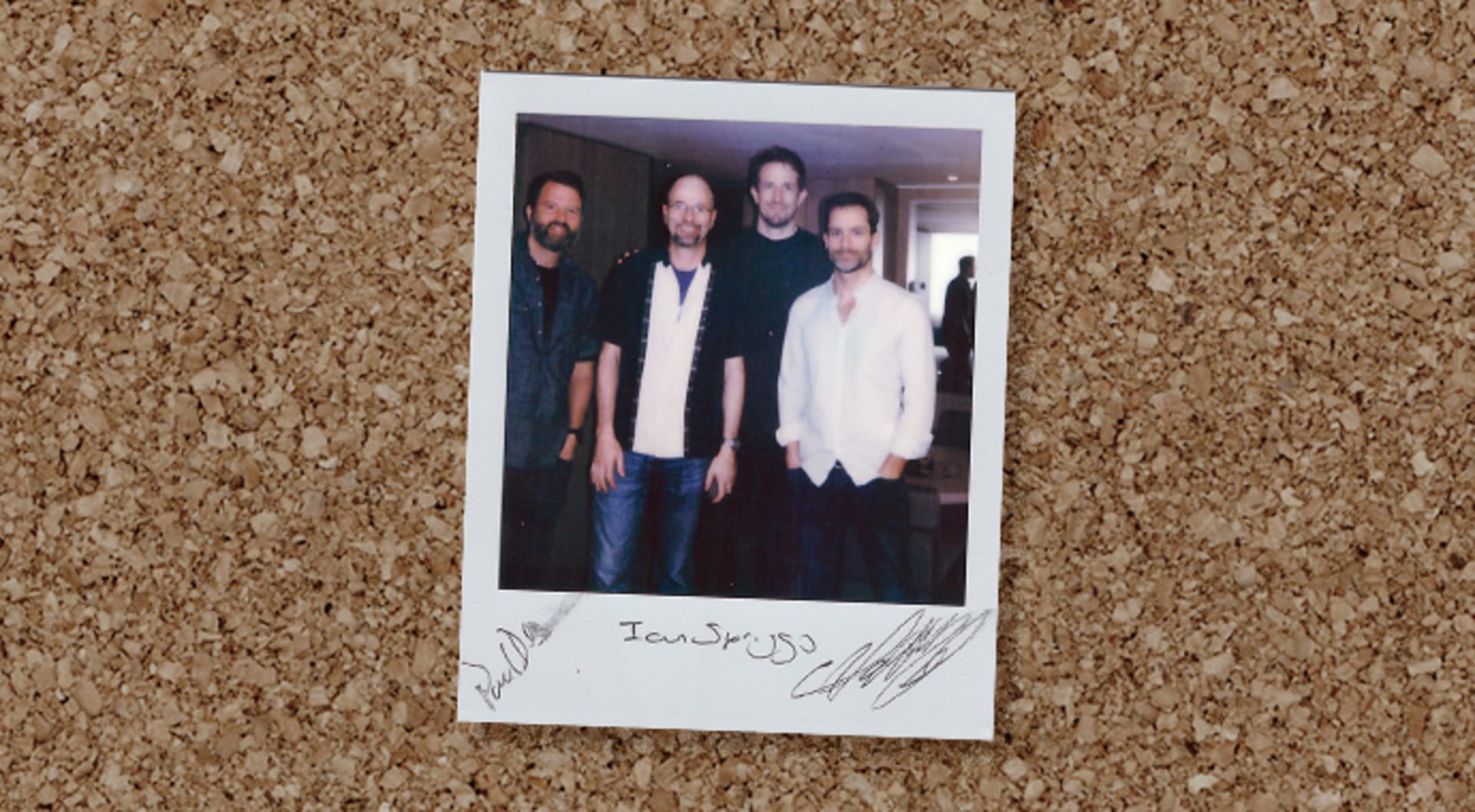
You and Scott must have a lot in common when it comes to classic art influences and techniques...
IS: What's cool with Scott is he basically was an anatomy instructor and he taught anatomy for years and years. That's how I came to know him. And then recently he jumped on to deep learning artwork, which was a huge leap for him. He completely changed everything he was doing and he discovered something new about himself. That's something I'm really inspired to do as well. That's why I’ve changed my portrait styles to try and see if I can make that leap like he did.
I'm not a technical person whatsoever, so I use the V-Ray straight-out-of-the-box settings. I rarely change what Chaos Group has provided in V-Ray Next for Maya — maybe one or two things here and there.
Ian Spriggs, 3D Character Artist
You switched to V-Ray GPU for this portrait — did you have any problems making the shift?
IS: No, not really — I just switched the settings to CUDA mode. I'm not a technical person whatsoever, so I use the V-Ray straight-out-of-the-box settings. I rarely change what Chaos Group has provided in V-Ray Next for Maya — maybe one or two things here and there.
Are you committed to V-Ray GPU now?
IS: Yeah, I think so. The new V-Ray GPU renderer with RTX has been pretty cool and renders like it's almost real-time. You can adjust the sliders and shaders and stuff right away and get instant feedback, which is really awesome.
With a V-Ray GPU workflow, it's a lot quicker to make more iterations so I can make more revisions. And because I make more revisions, it ends up being a better image in the end.
Ian Spriggs, 3D Character Artist
What’s your hardware setup?
IS: Lenovo provided me with a workstation, which is awesome, and then NVIDIA set me up with some graphic cards. Originally, I was using the Quadro P6000s; I have three of them and then a Quadro P1000. I started using those, which were fantastic, and then they upgraded me to RTX 6000s. So I'm using a P4000 and two Quadro RTX 6000s now.
The V-Ray GPU workflows are so much easier. You get so many more iterations of your work; you get more feedback. My portraits still take roughly the same amount of time, but I can make a lot more iterations. The way I work is: I'll render and then I'll fix that render, and I'll render again and I'll fix it — it’s more about fixing problems instead of building out. With a V-Ray GPU workflow, it's a lot quicker to make more iterations so I can make more revisions. And because I make more revisions, it ends up being a better image in the end.
What can we expect from the next portrait?
IS: I have no idea! I'm excited to find out because I've got all the tools I need. I don't actually know what to expect, but it will be something original and a new way of looking at digital humans.
My family is a huge one, so I’d love to do a portrait of my nephew — when the lockdown is over. I've always stayed away from doing children, the complexities of them, but at some point in the next year or so I'd like to try to tackle it. We'll see if he can be patient. If I take some photos of him, after five minutes, he's like, “I'm done.”
Create your best work faster and experiment more with V-Ray GPU in V-Ray Next for Maya. Try it now.

